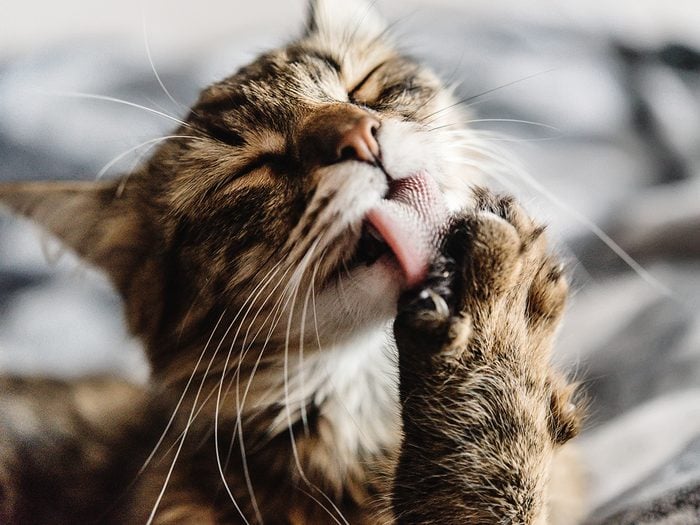
Why do cats lick themselves so much?
Adult cats spend up to 50 per cent of their waking hours grooming, according to Dr. Cynthia McManis, a veterinarian and the owner of Just Cats Veterinary Services. Read on to discover the surprising reasons your cat spends so much of its time licking.
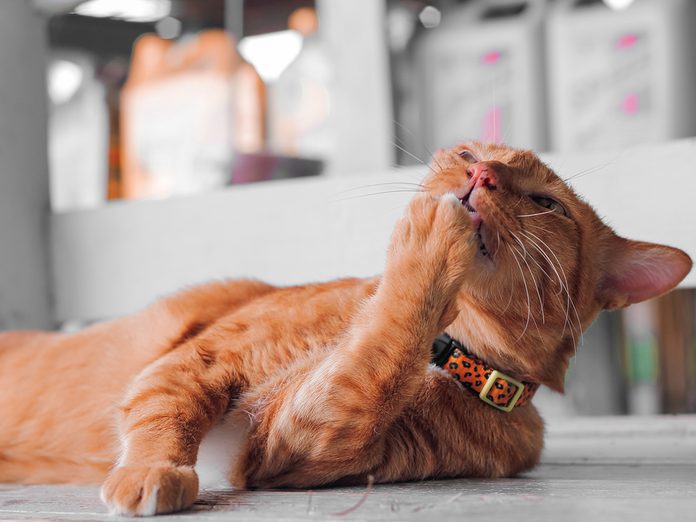
To protect against predators
Cats instinctively clean away food and additional odour-causing agents so they will not be detected by potentially threatening animals.
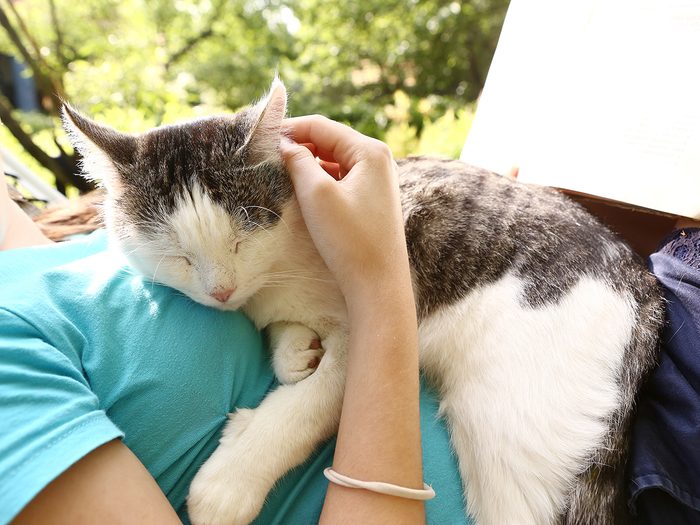
To cool down
Cats sweat a little from their paws, but they mostly rely on saliva evaporation on their fur to maintain normal body temperature. Grooming controls around one-third of a cat’s cooling process.
These funny cat GIFs are purr-fect for any occasion.
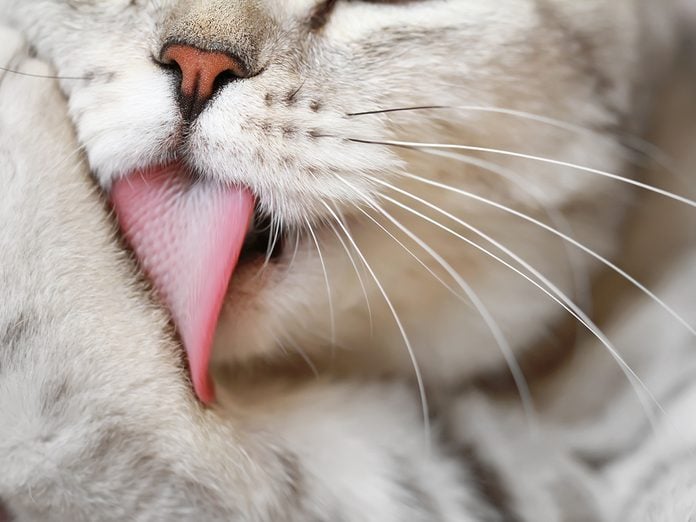
For fur maintenance and warmth
By licking itself, a cat helps distribute its natural oils evenly around its coat. This oil guards against dampness and seals in heat.
Here’s expert advice on how to make a cat more friendly.
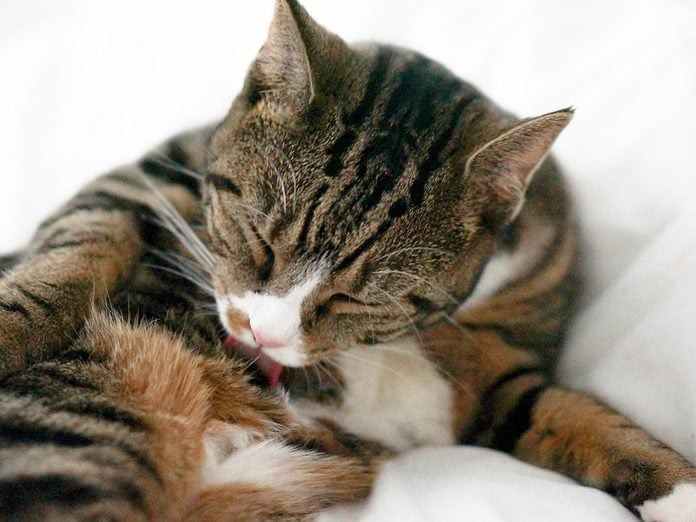
To keep wounds clean
Cat saliva is thought to contain enzymes that turn it into a natural antibiotic. If your cat licks a wound, it may be guarding against infection. Regardless, you should always see your veterinarian if your cat sustains an injury.
Here’s why you should never let your cat sleep in your bed.
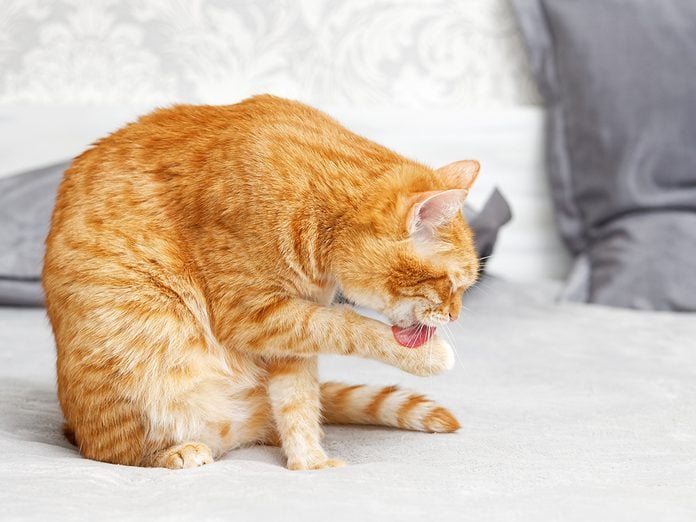
To stimulate blood flow
Similar to how a hairbrush promotes blood flow on the scalp, your cat’s tongue—which is covered in tiny, bristle-like hairs—improves circulation.
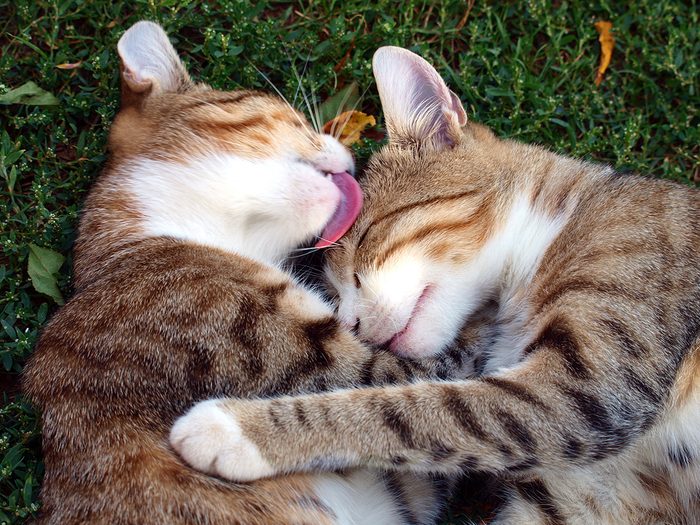
To show friendship
Familiar cats will groom each other as a sign of affection. Think of it as a kitty kiss, since it involves saliva exchange and mutual trust.
Brush up on the health benefits of owning a pet.
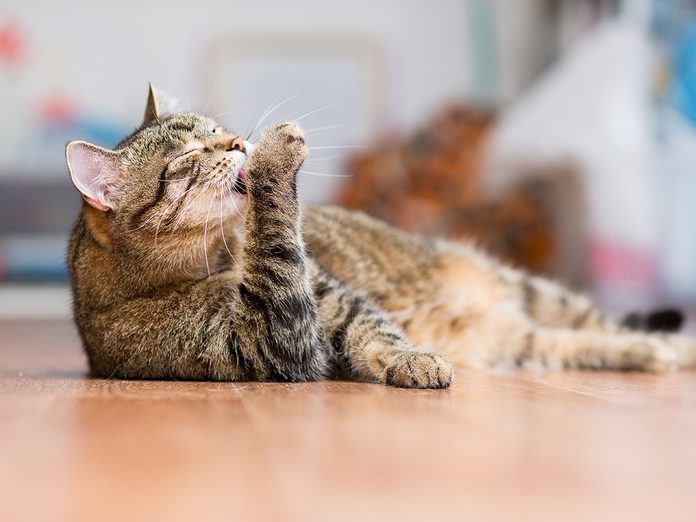
For relaxation
Cats take comfort in the ritual of self-cleaning. Remember, certain qualities indicate a healthy coat of fur, including:
- Shine and a soft, lush texture
- Little dander
- No black specks, which can be a sign of fleas
- No bald patches
- Not a lot of dead undercoat, since your cat normally removes it
To promote these qualities, feed your cat food that contains quality natural ingredients, essential nutrients and amino acids. Visit your veterinarian regularly to stay ahead of common problems, and establish a daily brushing routine with your cat. “Both cats and owners should look forward to this productive time together,” says Dr. Jane Brunt, a veterinarian at the Cat Hospital at Towson, in Baltimore.
Now that you know why cats lick themselves so much, find out the most common mistakes cat owners make.